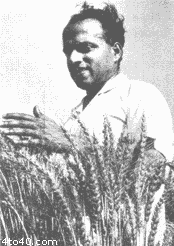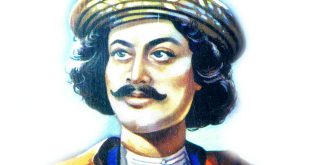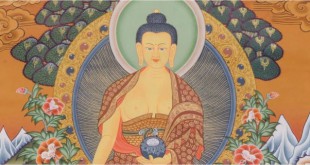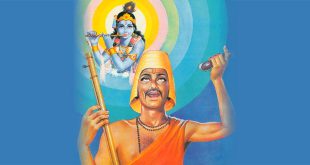 Monkombu Sambasivan Swaminathan (born 7 August 1925) is an Indian agricultural scientist. He currently serves as a Member of Parliament from Rajya Sabha and is also member of the National Advisory Council.
Monkombu Sambasivan Swaminathan (born 7 August 1925) is an Indian agricultural scientist. He currently serves as a Member of Parliament from Rajya Sabha and is also member of the National Advisory Council.
Swaminathan is known as the “Father of the Green Revolution in India”, for his leadership and success in introducing and further developing high-yielding varieties of wheat in India. He is the founder and Chairman of the MS Swaminathan Research Foundation. His stated vision is to rid the world of hunger and poverty. Dr. Swaminathan is an advocate of moving India to sustainable development, especially using environmentally sustainable agriculture, sustainable food security and the preservation of biodiversity, which he calls an “evergreen revolution”.
In 1999, Time magazine placed him in the Time 20 list of most influential Asian people of the 20th century.
Swaminathan’s family was among the most important in the village of Moncombu. Generations before, the rajah of Ambalapuzha had traveled to the neighboring region of Tamil Nadu. He had been very impressed by the scholars at the Thanjavur court and requested that one such scholar be sent to his province. Enji Venkatachella Iyer, Swaminathan’s ancestor, was chosen to move to Ambalapuzha. The rajah was so delighted and struck by Venkatachella Iyer’s knowledge of the scriptures that he gifted him acres of land comprising the village of Monkombu. The family came to be called the Kottaram (palace) family.
M. S. Swaminathan was born in Kumbakonam on August 7, 1925. His father died when Swaminathan was 11. His early schooling was at the Native High School and later at the Little Flower Catholic High School in Kumbakonam.
He went to college at Maharajas College in Ernakulam, Kerala and earned a Bachelor of Science degree in zoology. During the time of wartime food shortages he chose a career in agriculture and enrolled in Tamil Nadu Agricultural University where he graduated as valedictorian with another Bachelor of Science degree, this time in Agricultural Science. In 1947, the year of Indian independence he moved to the Indian Agricultural Research Institute (IARI) in New Delhi as a post-graduate student in genetics and plant breeding and obtained a post-graduate degree with high distinction in Cytogenetics in 1949.
He later received a UNESCO Fellowship to continue his IARI research on potato genetics at the Wageningen Agricultural University, Institute of Genetics in the Netherlands. Here he succeeded in standardizing procedures for transferring genes from a wide range of wild species of Solanum to the cultivated potato, Solanum tuberosum. In 1950, he moved to study at the Plant Breeding Institute of the University of Cambridge School of Agriculture. He earned a Doctor of Philosophy (Ph.D) degree in 1952, for his thesis, “Species Differentiation, and the Nature of Polyploidy in certain species of the genus Solanum – section Tuberarium”. His work presented a new concept of the species relationships within the tuber-bearing Solanum.
Swaminathan then accepted a post-doctoral research associateship at the University of Wisconsin, Department of Genetics to help set up a USDA Potato Research Station. Despite his strong personal and professional satisfaction with the research work in Wisconsin, he declined the offer of a full time faculty position, returning to India in early 1954.
Dr. Swaminathan has worked worldwide in collaboration with colleagues and students on a wide range of problems in basic and applied plant breeding, agricultural research and development and the conservation of natural resources.
On the occasion of Nobel Peace Prize award in 1970, the laureate Dr. Norman Borlaug, said of Dr. Swaminathan: “The green revolution has been a team effort and much of the credit for its spectacular development must go to Indian officials, Organizations, Scientists and farmers. However, to you, Dr. Swaminathan, a great deal of the credit must go for first recognizing the potential value of the Mexican dwarfs. Had this not occurred, it is quite possible that there would not have been a green revolution in Asia”.
On the occasion of the presentation of the First World Food Prize to Dr. Swaminathan in October 1987, Mr. Javier Perez de Cuellar – Secretary General of the United Nations, wrote: “Dr. Swaminathan is a living legend. His contributions to Agricultural Science have made an indelible mark on food production in India and elsewhere in the developing world. By any standards, he will go into the annals of history as a world scientist of rare distinction”.
Swaminathan has been described by the United Nations Environment Programme as “the Father of Economic Ecology”.
He was one of three from India included in TIME Magazine’s 1999 list of the “20 most influential Asian people of the 20th century”, the other two being Mahatma Gandhi and Rabindranath Tagore.
Following the 2004 Indian Ocean earthquake, he advised India to plant new mangrove groves along the shoreline to minimize damage from future tsunamis.
Dr. Swaminathan was the featured speaker at The 2006 Norman E. Borlaug International Symposium: in Des Moines, Iowa on, October 19, 2006. He was sponsored by Humanities Iowa, an affiliate of the National Endowment for the Humanities. Dr. Swaminathan presented The “Third Annual Governor’s Lecture” and spoke on “The Green Revolution Redux: Can we replicate the single greatest period of food production in all human history?” about the cultural and social foundations of the Green Revolution in India and the role of historic leaders in India, such as Mahatma Gandhi, in inspiring the Green Revolution there by calling for the alleviation of widespread hunger. He also talked about the links between Gandhi and the great Iowa scientist George Washington Carver.,
Swaminathan is a Fellow of the Royal Society of London the U. S. National Academy of Sciences, the Russian Academy of Sciences, the Chinese Academy of Sciences, and the Italian Academy of Sciences.
 Kids Portal For Parents India Kids Network
Kids Portal For Parents India Kids Network






